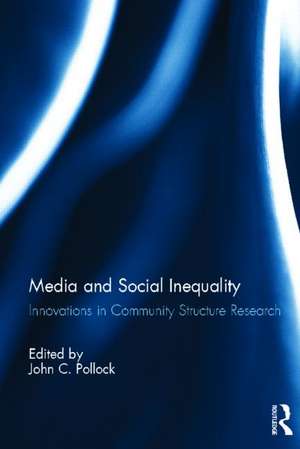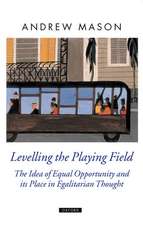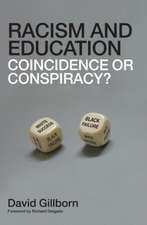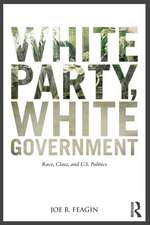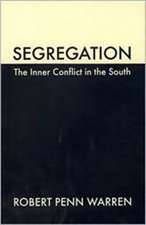Media and Social Inequality: Innovations in Community Structure Research
Editat de John Pollocken Limba Engleză Hardback – 18 dec 2012
This book was originally published as a special issue of Mass Communication and Society.
Preț: 1003.30 lei
Preț vechi: 1223.53 lei
-18% Nou
Puncte Express: 1505
Preț estimativ în valută:
192.00€ • 208.49$ • 161.28£
192.00€ • 208.49$ • 161.28£
Carte tipărită la comandă
Livrare economică 22 aprilie-06 mai
Preluare comenzi: 021 569.72.76
Specificații
ISBN-13: 9780415631181
ISBN-10: 0415631181
Pagini: 208
Dimensiuni: 156 x 234 mm
Greutate: 0.54 kg
Ediția:New.
Editura: Taylor & Francis
Colecția Routledge
Locul publicării:Oxford, United Kingdom
ISBN-10: 0415631181
Pagini: 208
Dimensiuni: 156 x 234 mm
Greutate: 0.54 kg
Ediția:New.
Editura: Taylor & Francis
Colecția Routledge
Locul publicării:Oxford, United Kingdom
Public țintă
Postgraduate, Professional, and UndergraduateCuprins
1. Introduction: Community Structure Scholarship: An Emerging Realignment John C. Pollock 2. Structural Pluralism in Journalism and Media Studies: A Concept Explication and Theory Construction Seungahn Nah and Cory L. Armstrong 3. Mass Media as a Macrolevel Source of Social Control: A New Direction in the Community Structure Model Masahiro Yamamoto 4. Social Capital in a Community Context: A Multilevel Analysis of Individual- and Community-Level Predictors of Social Trust Douglas Blanks Hindman and Masahiro Yamamoto 5. Structural Determinants of Local Public Affairs Place Blogging: Structural Pluralism and Community Stress Brendan R. Watson and Daniel Riffe 6. Nationwide Newspaper Coverage of Universal Healthcare: A Community Structure Approach Kristen Kiernicki, John C. Pollock and Patrick Lavery 7. Structural Pluralism and the Community Context: How and When Does the Environment Matter? Leo Jeffres, Edward Horowitz, Cheryl C. Bracken, Guowei Jian, Kimberly A. Neuendorf and Sukki Yoon 8. Shaping the Agenda of Local Daily Newspapers: A Methodology Merging the Agenda Setting and Community Structure Perspectives Maxwell McCombs and Marcus Funk
Recenzii
'This book...is a study of "the impact of society on media" rather than the usual concern of media's impact on society; it also makes use of Big Data from a variety of sources that are not common in current communication research; finally, it suggests that the research on community structure not only influences what journalism says about social problems but that research from this volume can help journalists promote "social change".' Emilie G. McAnany, Communication Research Trends
'John Pollock has established a well-earned reputation as a productive scholar who believes that undergraduates can contribute to knowledge at the same time as they are learning about the role that the media of communication play in shaping and reflecting the communities in which they live...Although Media and Social Inequality was originally published as a special issue of Mass Communication and Society, Pollock's expanded introduction and an analysis of newspaper coverage of the universal health insurance mandate written by Pollock and two of his former students are original contributions to this volume.' Oscar H. Gandy Jr., Journal of Communication
'...Media and Social Inequality offers thought-provoking and diverse studies of media’s community context from an impressive lineup of community news researchers. Variation in scholars’ approaches reflects variation in the meaning of “community structure.” Some chapters are consistent with Pollock’s community structure approach, assessing the relationship between community characteristics and news coverage. Other chapters are rooted in the structural pluralism approach of Tichenor, Donohue, and Olien, which conceptualizes news as a consequence of a community’s power distribution. Chapters focus on an array of dependent variables: news content, social trust, blog creation, and neighborhood ties are all assessed as possible consequences of community structure. Findings vary, depending on conceptualization and measurement. Clearly, “community structure” has many dimensions, and a great deal of the book’s value lies in the revelation and comparison of these dimensions.' Wilson Lowrey, Journalism & Mass Communication Quarterly
'John Pollock has established a well-earned reputation as a productive scholar who believes that undergraduates can contribute to knowledge at the same time as they are learning about the role that the media of communication play in shaping and reflecting the communities in which they live...Although Media and Social Inequality was originally published as a special issue of Mass Communication and Society, Pollock's expanded introduction and an analysis of newspaper coverage of the universal health insurance mandate written by Pollock and two of his former students are original contributions to this volume.' Oscar H. Gandy Jr., Journal of Communication
'...Media and Social Inequality offers thought-provoking and diverse studies of media’s community context from an impressive lineup of community news researchers. Variation in scholars’ approaches reflects variation in the meaning of “community structure.” Some chapters are consistent with Pollock’s community structure approach, assessing the relationship between community characteristics and news coverage. Other chapters are rooted in the structural pluralism approach of Tichenor, Donohue, and Olien, which conceptualizes news as a consequence of a community’s power distribution. Chapters focus on an array of dependent variables: news content, social trust, blog creation, and neighborhood ties are all assessed as possible consequences of community structure. Findings vary, depending on conceptualization and measurement. Clearly, “community structure” has many dimensions, and a great deal of the book’s value lies in the revelation and comparison of these dimensions.' Wilson Lowrey, Journalism & Mass Communication Quarterly
Descriere
This book is among the first systematically to explore the impact of community inequality on reporting political and social change. It was originally published as a special issue of Mass Communication and Society.
